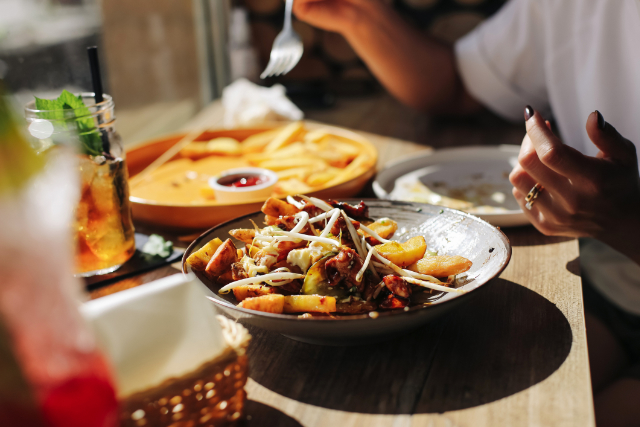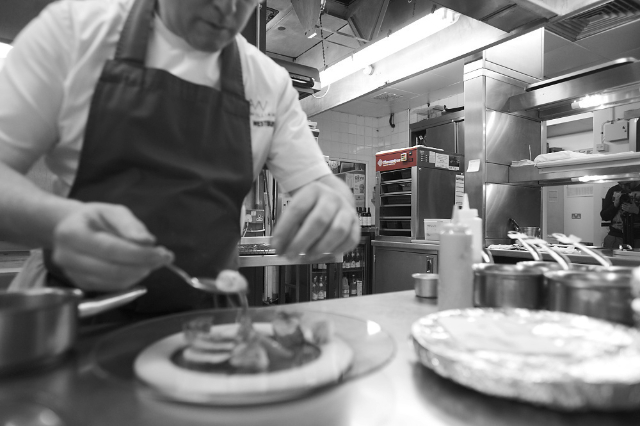Cook & Hold Like a Pro: Top Tips from Thermodyne

If you’re using Thermodyne equipment for cooking and holding, you’re already one step ahead. But a few smart tips can turn “good” into “great,” better yields, better quality, less waste. Let’s get cooking.
Choose your containers wisely
- Avoid containers that are excessively tall or narrow, bain-marie/double-boiler style pots, glass cookware or stainless inserts that don’t sit flat. These can interfere with the conduction of heat, slowing things down and jeopardizing food safety.
- Instead, use flat-bottom metal baking sheets, restaurant pans (stainless or aluminum) or flat‐bottom ceramic dishes. High-temperature plastic containers also work when appropriate.
- Make sure pans are flat on the bottom. No wobble. Nothing propping the product off the bottom (for re-thermalization, avoid pans deeper than 2″).
Arrange and cover your pans for success
- Lay out your food in a single layer whenever possible. Over-stacking causes uneven heating.
- If you’re reheating or holding foods like pasta, refried beans, stew: go for a large shallow pan rather than a deep narrow one. The larger surface area gets the heat in faster.
- For holding, cover your pans (unless you’re holding breaded items). Use plastic wrap, foil, lids, whatever works to seal in moisture and preserve texture.
Tips for special cases
- If you’re doing sous-vide or en papillote (sealed bags): those are ideal because they lock in flavor, moisture and you avoid drying out. Simply place the sealed bag on a flat tray and put it directly on the shelf.
- For greasy foods, ground meats or high-oxidant items: consider a pan screen to allow better air flow and heat transfer.
- Holding bread and pastry? Make sure they’re covered or in sealed bags/containers, you want to preserve that freshness and avoid drying/crusting.
Why these rules matter
- Consistent temperature = safe food: If heat can’t transfer effectively (because of the container shape, pan depth, etc.), you risk parts of the food staying under-temperature for too long. That’s both a quality issue and potentially a food-safety issue.
- Better output = better yield: Shallow pans, single layers, good pans, all of these mean faster, more even heating, less over-cooking on edges while under-cooking in the middle. That means less waste.
- Holding smart = less spoilage: Covering pans, avoiding tall narrow ones (which trap heat unevenly) and controlling moisture all help when you’re holding product. The better you hold it, the longer it stays premium and service ready.
- Operational efficiency: Less fiddling with “why is this half-cold” or “why is this dried out” means faster service, happier customers, smoother kitchen flow.
Quick checklist for every cook-and-hold session
- Pan is flat bottom, shallow when possible (≤2″ for reheat)
- Food is arranged in a single layer
- Pan is covered (unless breaded product)
- No rack or product floating above pan bottom
- For reheats use shallow pans, or multiple smaller pans if large volume
- Special bags (sous-vide/en papillote) placed on flat tray/shelf
- Bread/pastry stored in sealed container/bag when holding
Bonus tip: Volume matters
If you’re serving large volumes (for catering, events, high‐traffic times), instead of one huge pan, consider multiple smaller pans. Why? Opening a large vessel repeatedly lets out moisture, heat escapes, product degrades. Using smaller pans reduces that “exposure” each time you serve.
Thermodyne Cooking and Holding Tips
Whether you’re cooking up trays of pasta, re-heating a big run of roasted veggies, or holding bread for that next service rush, these simple adjustments make a big difference when you’re using Thermodyne equipment. It’s not just “getting it hot” it’s getting it done right, consistently, and with minimal waste.
Need more detailed help or product-specific advisories? Thermodyne has a great resource section, and your unit’s manual is always a solid reference. Let your kitchen run smoother, your service be faster, and your yields be stronger.

Posted in: Cooking Tips & Recipes